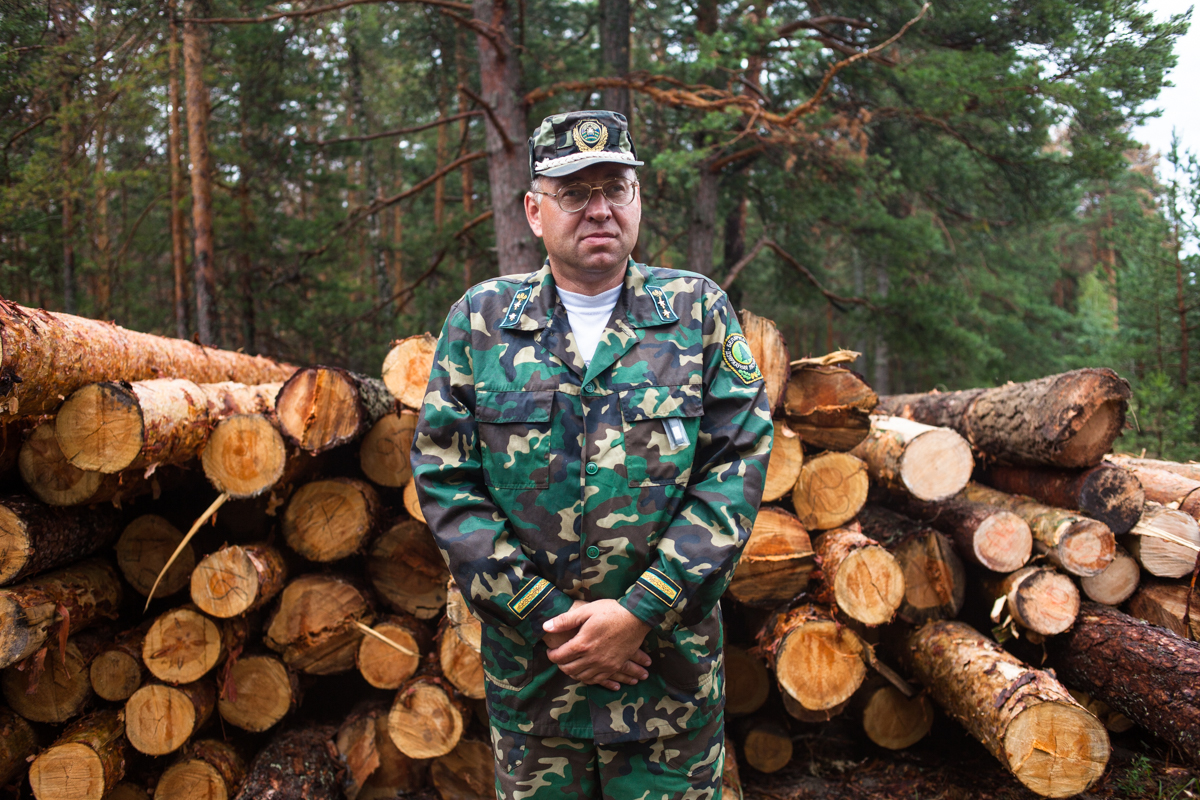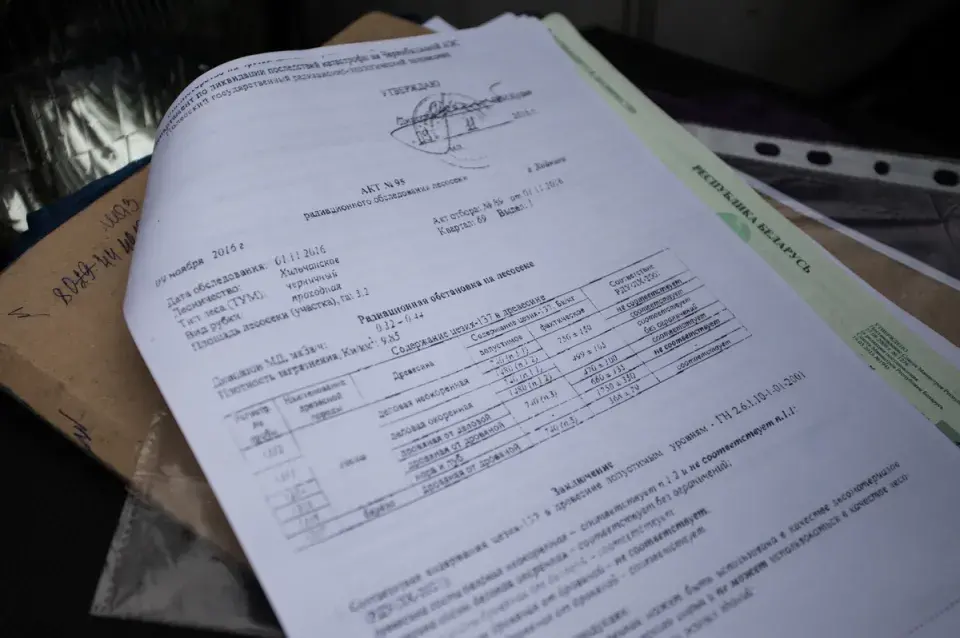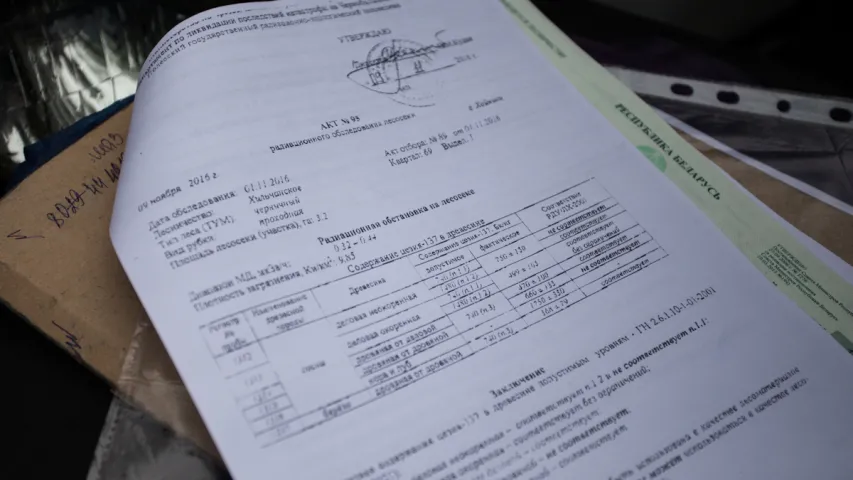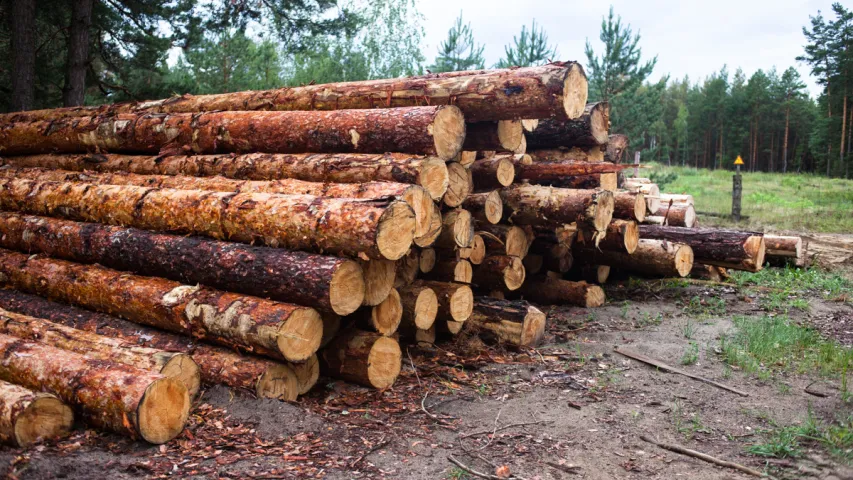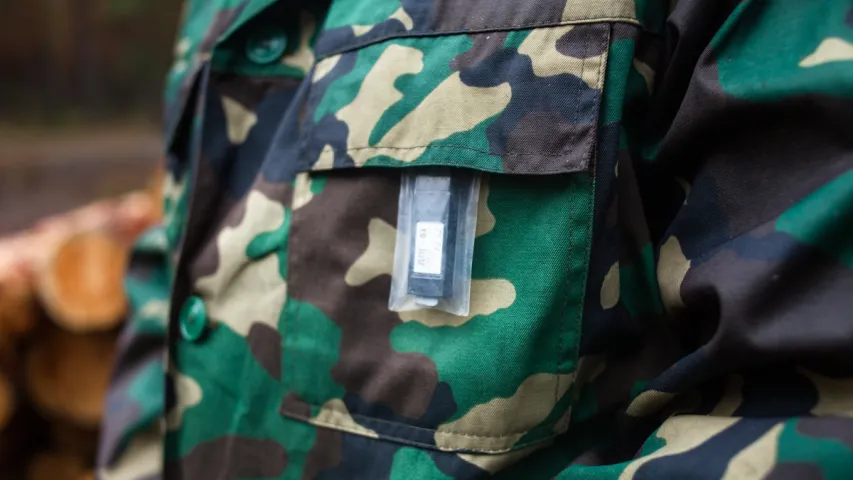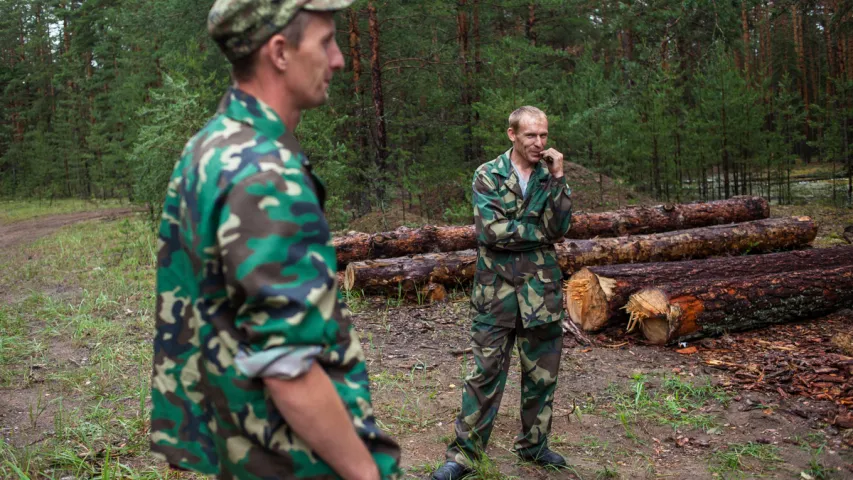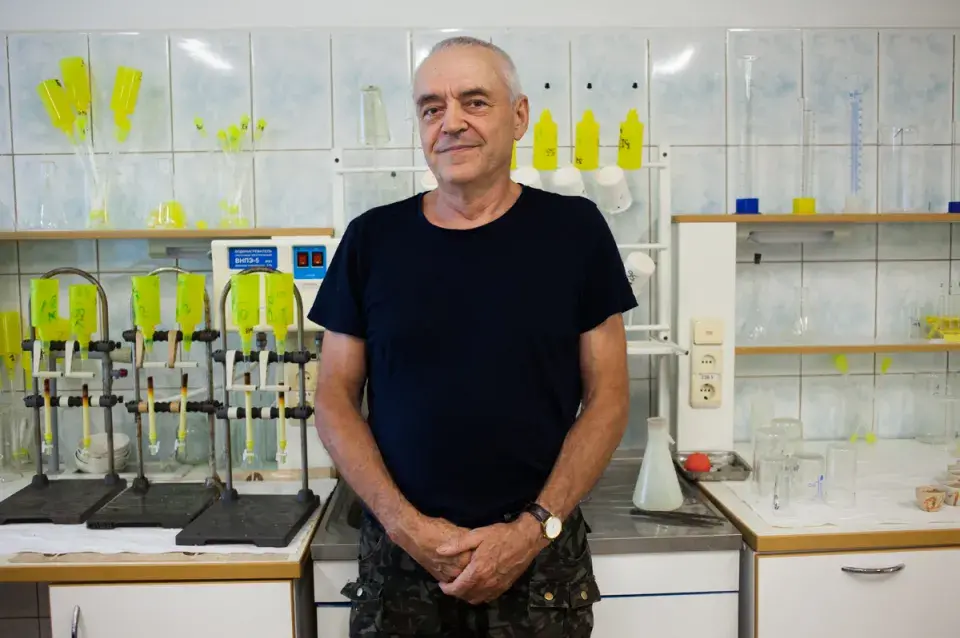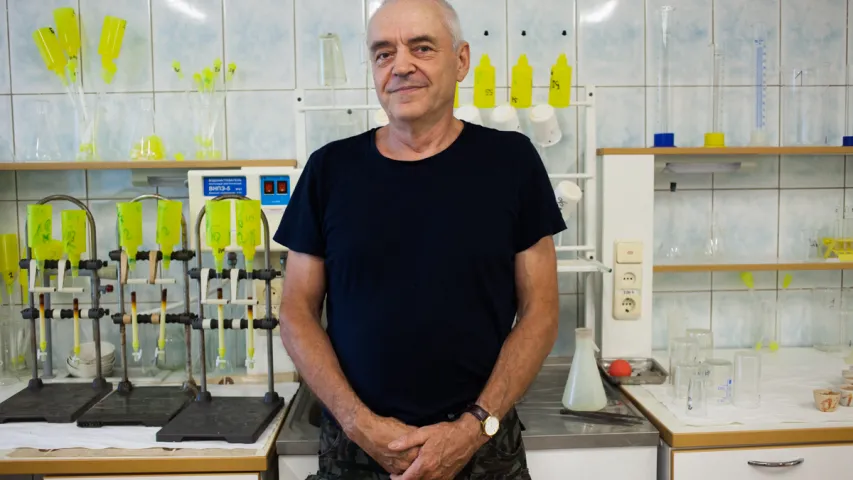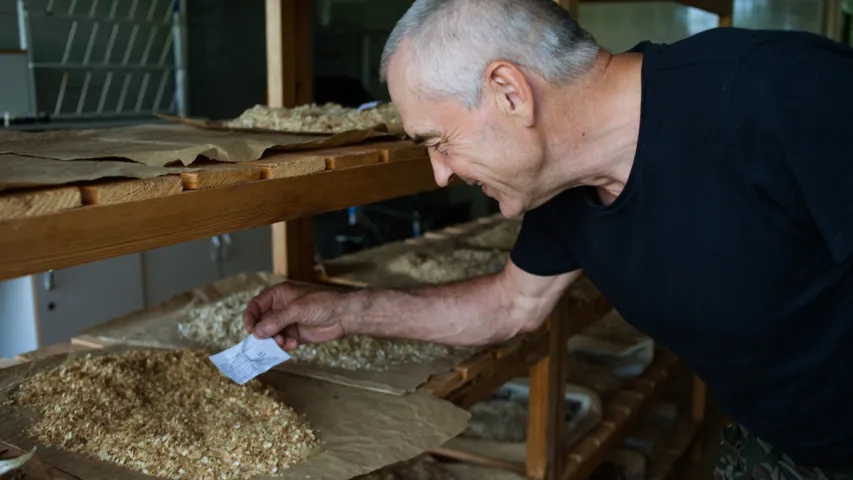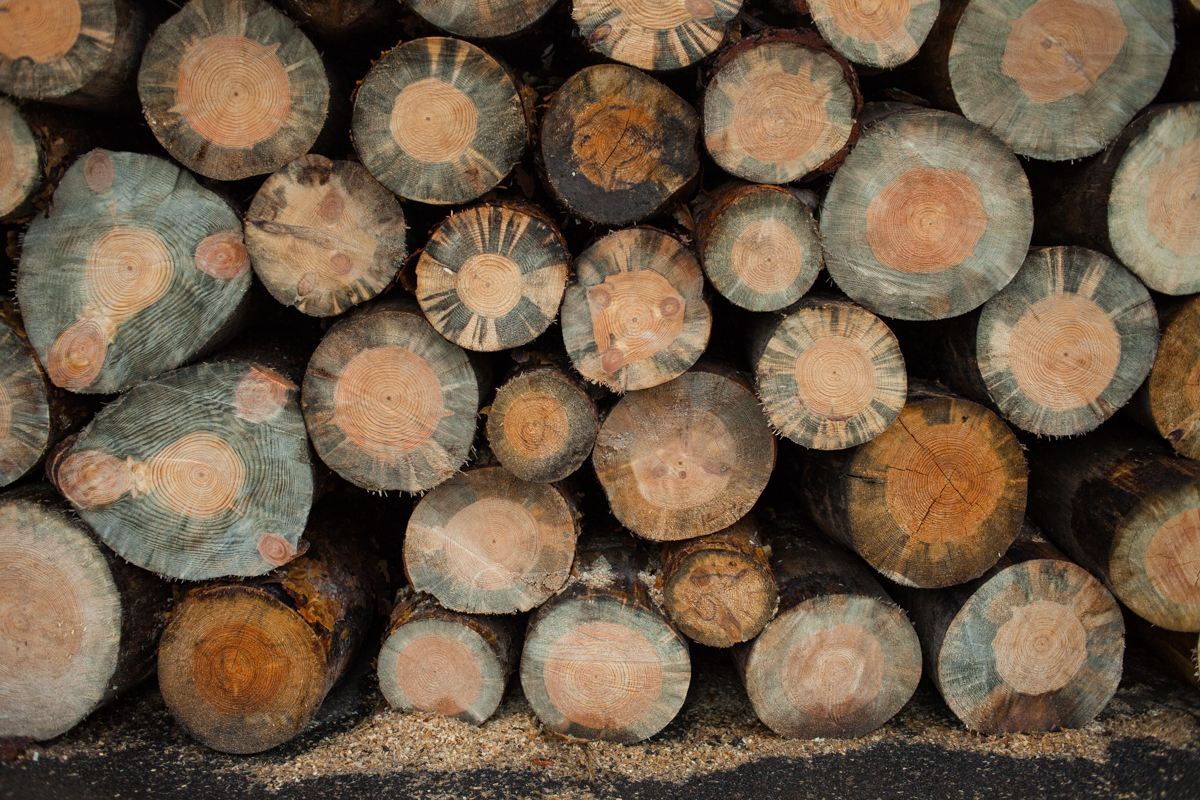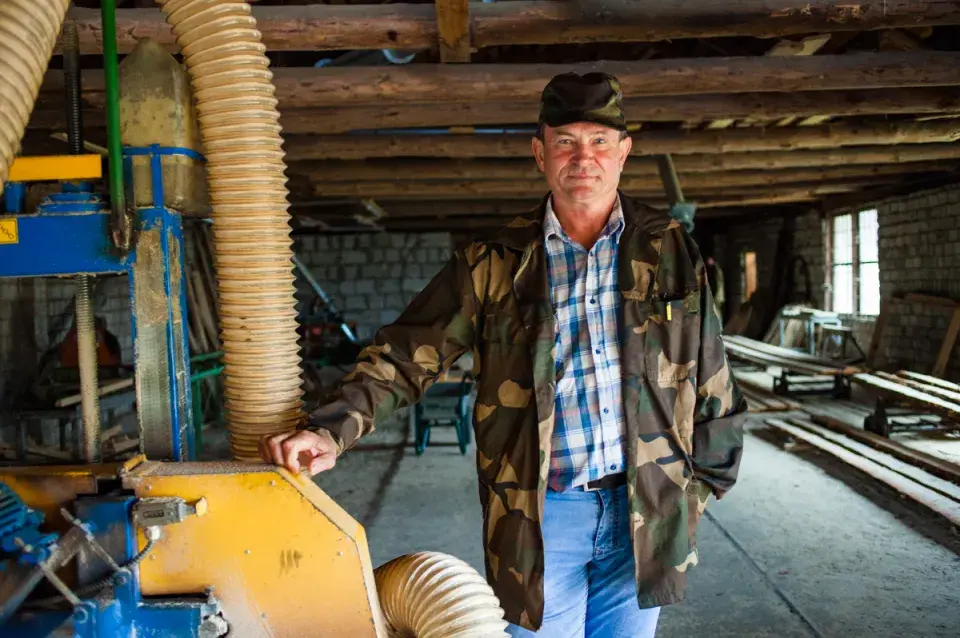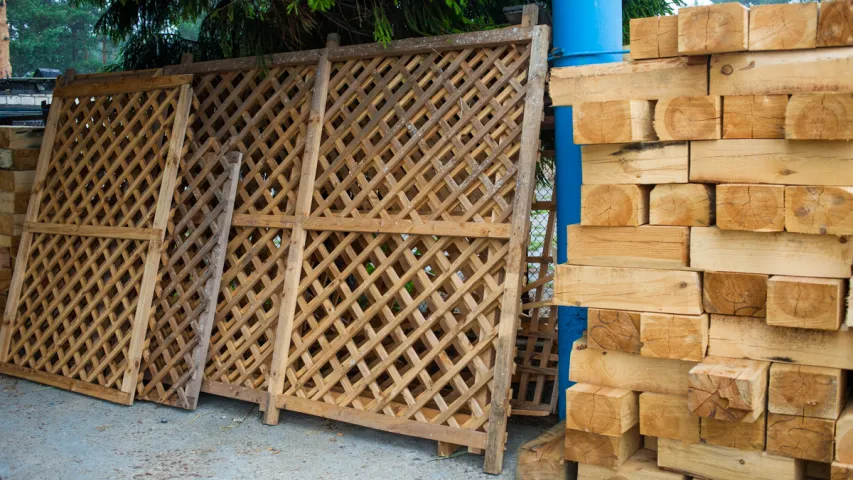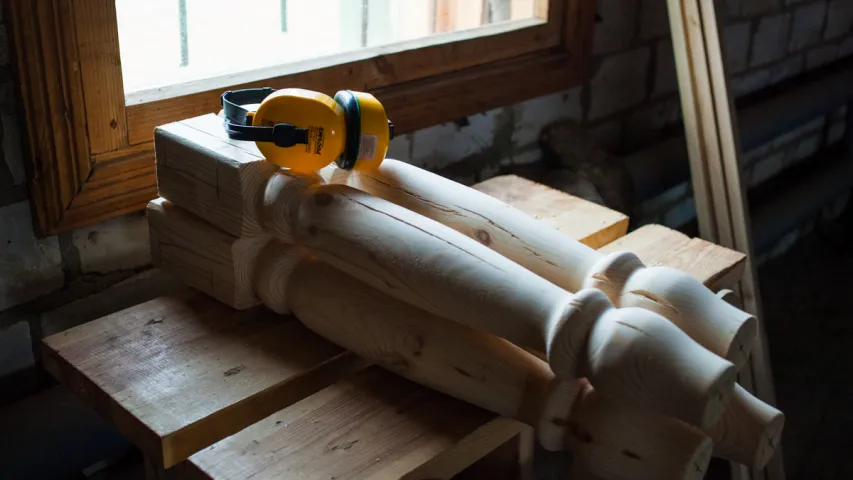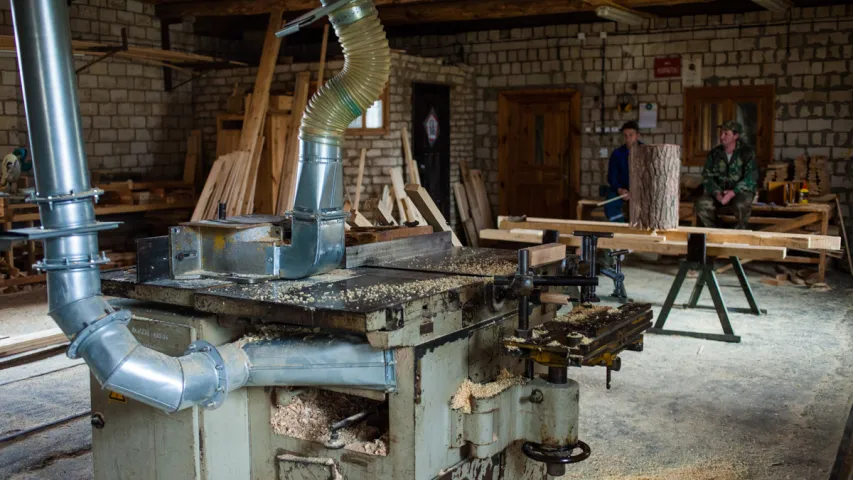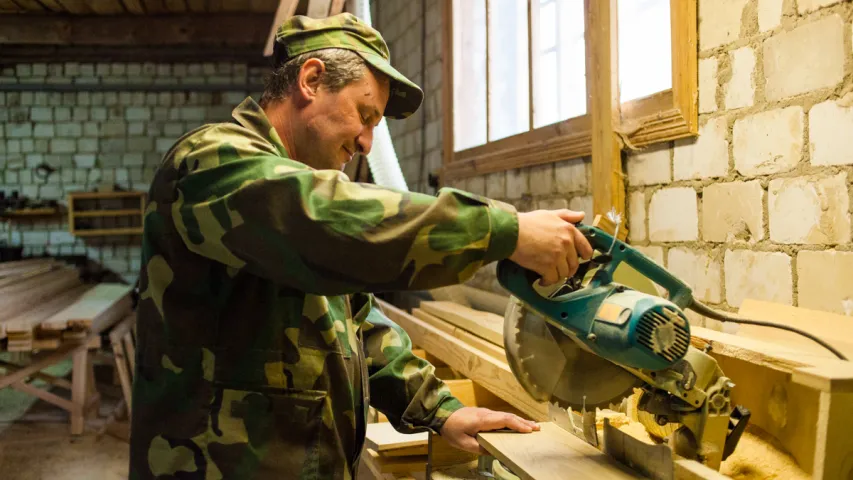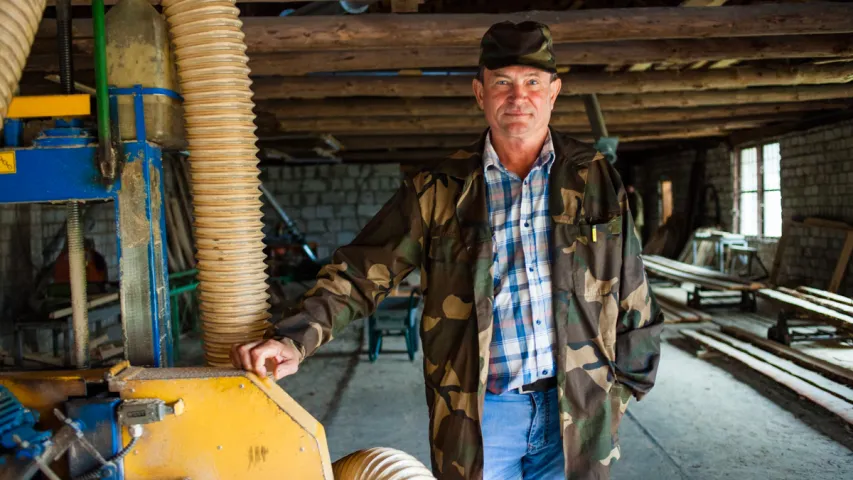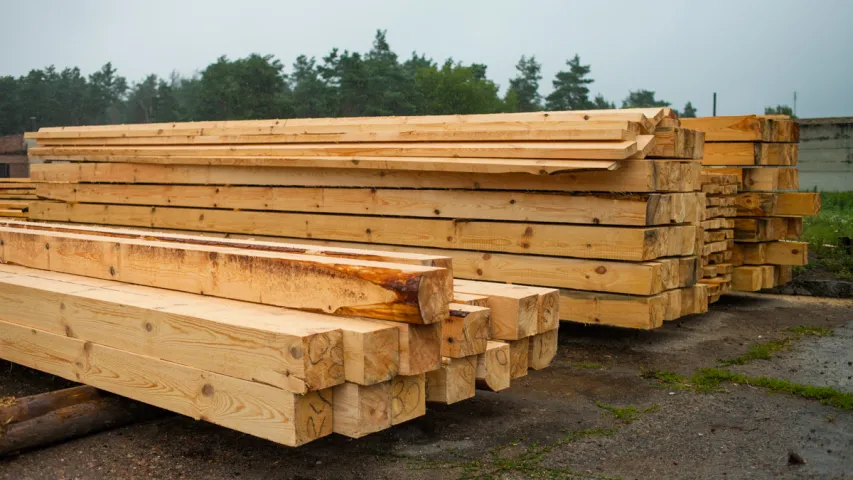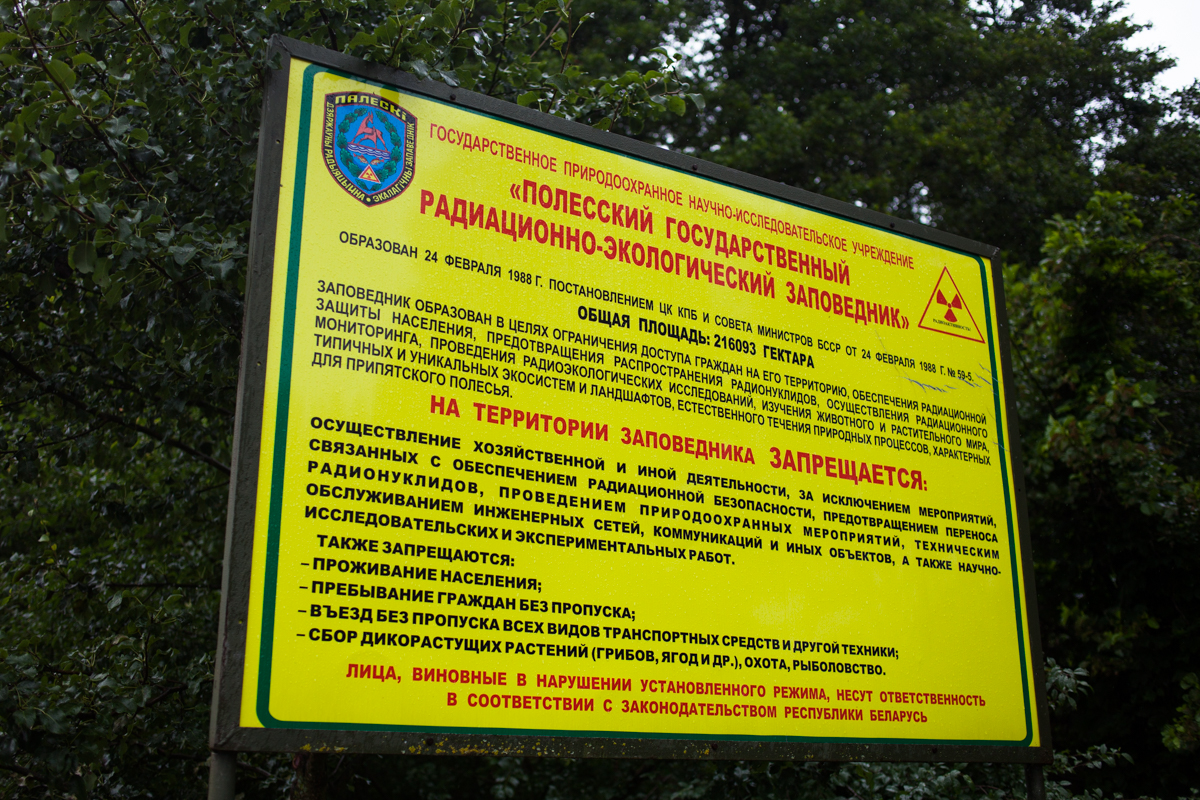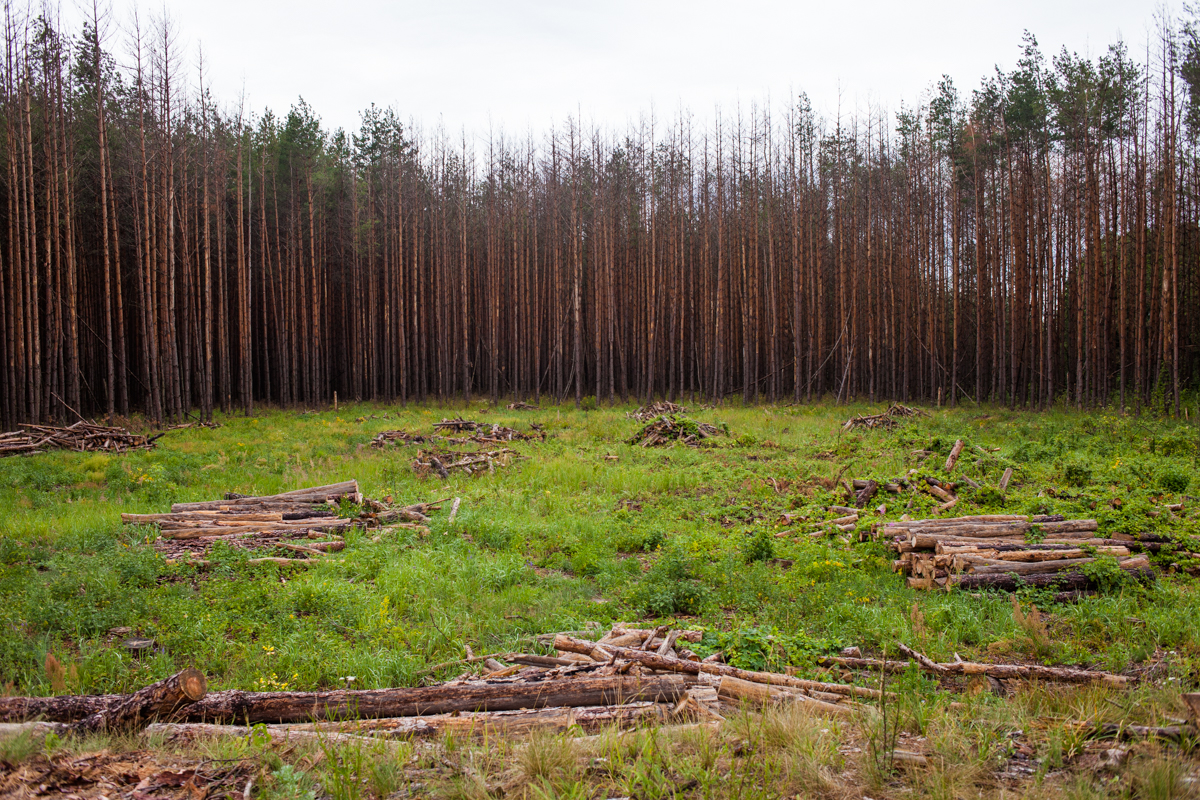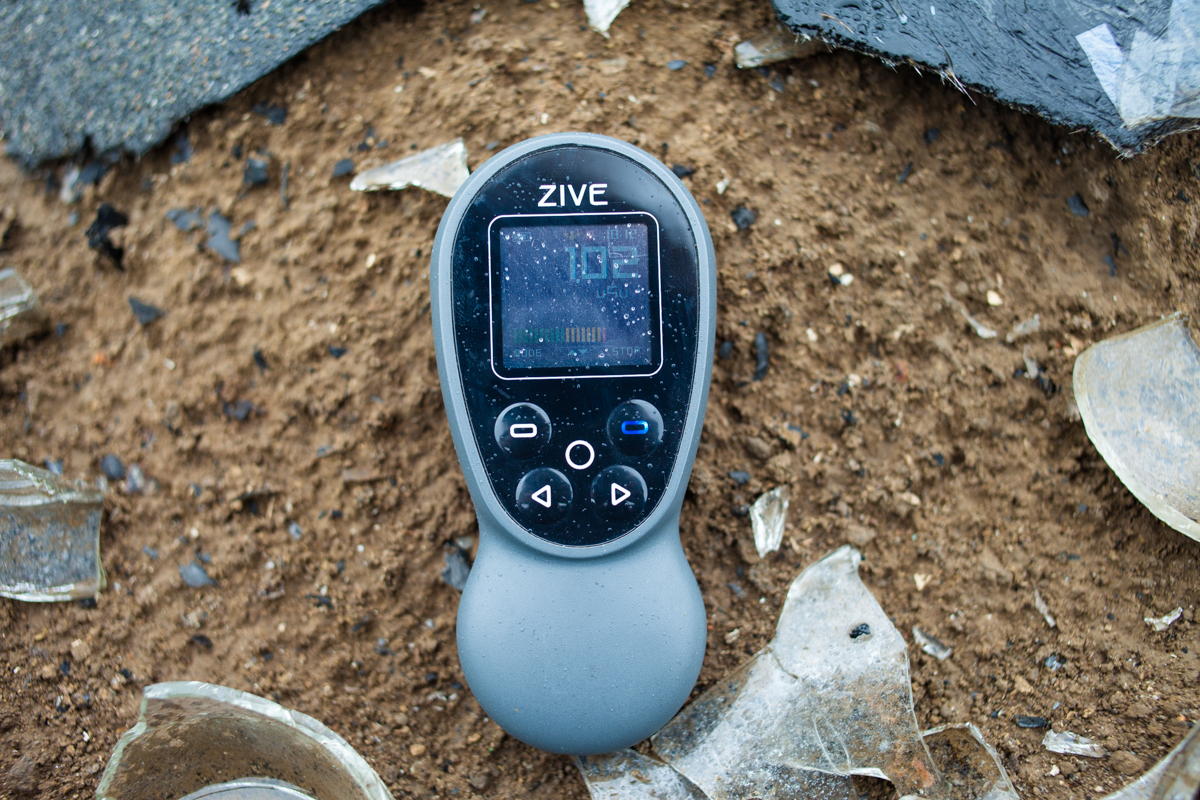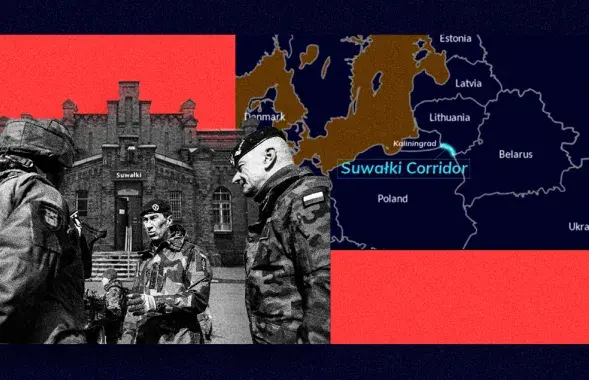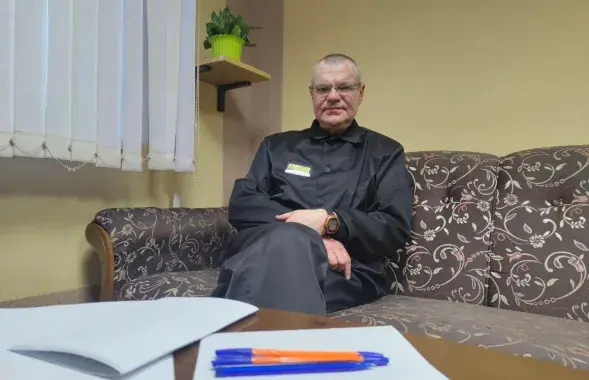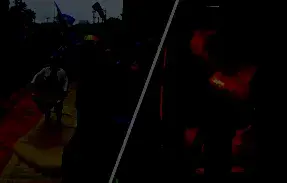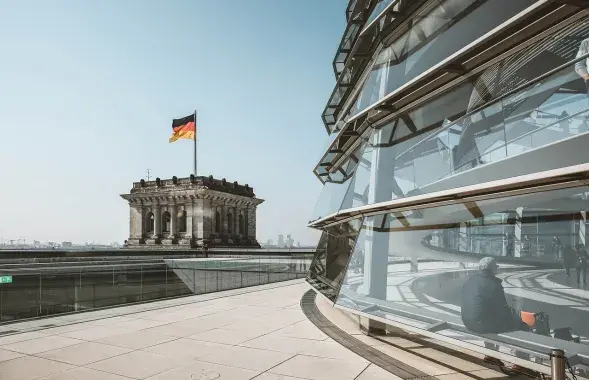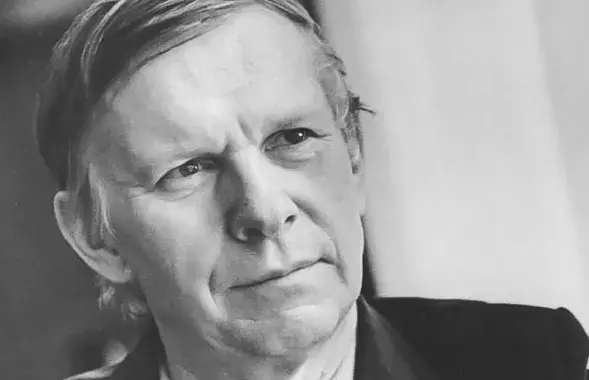How radioactive wood from Belarus is sold across the world
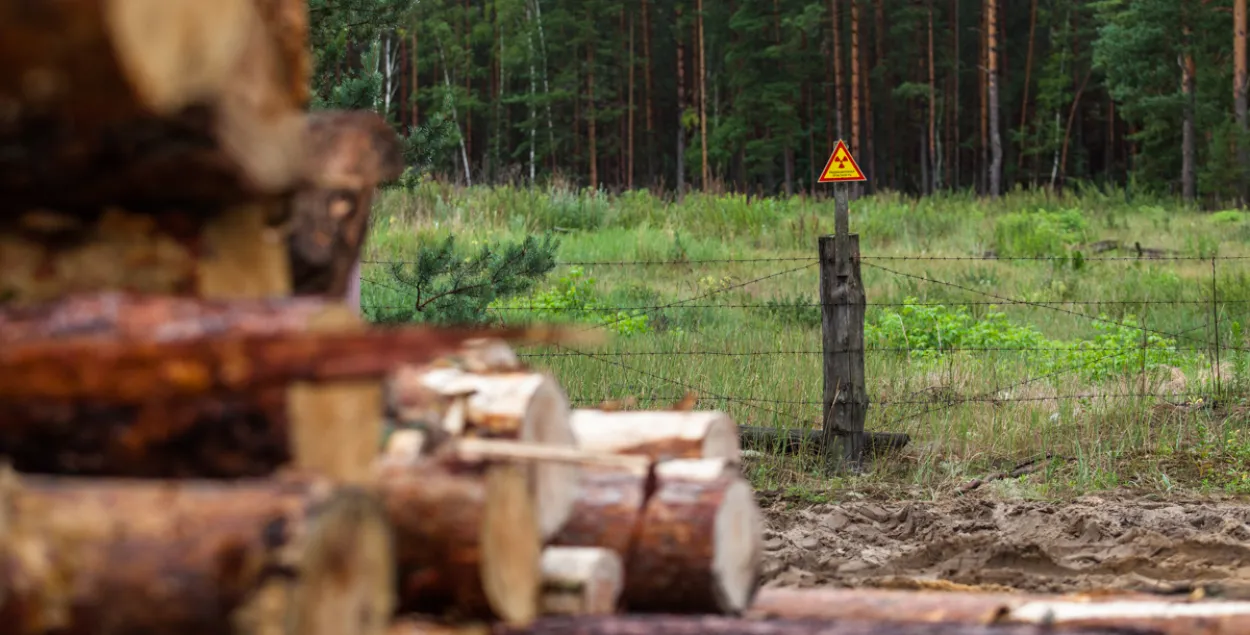
Wood from the contaminated area in Narowla district. Very soon, it will become a valuable round timber.
"Kolya, you are done. You must have said enough for five years in prison,” woodchoppers are joking while we are talking to their boss Mikalai.
Kolya, an assistant forester in the Chilčanski forestry, has worked in the Palessie State Radiation and Ecology Reserve for 21 years. By local standards, he has a good job – a salary with bonuses and benefits for working in harmful conditions ($325) plus free duty uniform and footwear. If it were up to Mikalai, he would wish nothing changed in his life before he eventually retires in ten years. But Mikalai does not believe things will remain the same. Very soon, the government will release a significant part of the Reserve’s territory into economic turnover. Nobody knows yet what it will mean for the Reserve workers but Mikalai expects nothing good from the future.
"If our zone is released from the reserve, the net salary without benefits will be around BYN300 ($160). Who will agree to work here surrounded by radiation for these peanuts?"
We find ourselves on the territory of the radioactive reserve, 63rdsection of the Narowla forestry district – a usual pinery, no brown or ill-looking trees, next to the site where freshly logged wood (mature pine trees, six-meter-long commercial timber) is being stacked. Wood choppers say it is perfect for construction. Without a question, Mikalai presents all the paperwork for the timber. Radiation in the chopping area is only twice the normal levels – a clean spot by local standards.
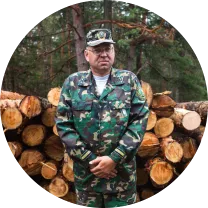
[Under the rules], a forest area must undergo radiation checks prior to logging. Workers randomly pick three trees and send samples to a lab for cesium-level tests. If some contamination is detected, all the trees are buried. I do only what I am authorized to do. I will not deal in dirty wood to end up in prison. There were cases when a whole batch of timber was stopped at the border for examination and returned. But that was long ago and that batch did not come from the Reserve. Obviously, I understand that one tree could absorb radiation and the one next to it did not. But risk is always there. Hence, they check everything here.
All timber samples are tested in the spectrometry and radiochemistry laboratory run by the Reserve’s science department. Lab workers occupy a former kindergarten building in the abandoned village of Babčyn. On the walls are contamination area maps; on the desks, report folders are piling up next to outdated computers. Lab director Viachaslau Zabrodski cautiously shares his opinion about wood logging in the Reserve to Euroradio.
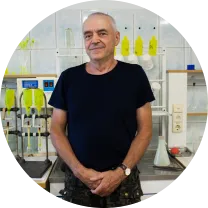
There is always a certain margin of error. In my view, it would be wise to keep and use this timber only inside the Reserve. The probability of contaminated wood simply not making it into a test sample will always remain. There are much cleaner forests [than this one] in Belarus.
Viachaslau Zabrodski even published an article on this topic in the Natural Resources journal. He wrote that out of 2000 timber samples from the Reserve’s commercial experimental area wood logging takes place almost 50 per cent were contaminated with cesium.
When it comes to strontium, Belarus has no set radiation norms. Russia’s norm is set at 370 Bq/kg; in Ukraine - 60 Bq/kg but Belarus simply has no established norms for strontium.
Zabrodski’s research results show that between 40 and 70 percent of nominally cesium-free timber contain significant levels of strontium – higher than the soft Russian norms. For example, if one applies Ukrainian norms to our timber, 85-100 percent of trees logged in the Reserve are contaminated with strontium-90. This is an almost pure beta particle source and a huge radiation hazard. It is more easily absorbed by plants than cesium. According to Belarusian and Ukrainian scientists, the process of fuel particle dissolution is ending only now. It is accompanied by penetration of large amounts of strontium-90 into soil. It means time is definitely not right for clean timber production on this contaminated territory.
According to Zabrodski, nearly 80 percent of wood ash in the Reserve is radioactive waste that must be buried in special burial sites.
He concluded in his research that the lack of strontium contamination norms contributes to the transfer of radioactive strontium from contaminated regions into clean areas and can lead to internal exposure of the population to radiation. Despite their warnings, scientists are increasingly asked to justify the need for an increased volume of economic activities in the Reserve.
In Chojniki, also located in the territory of the Reserve, there is a sawmill where all wood from the zone, including the one stacked in the 63rd section, is dispatched to. Next to the entrance, samples of wood products on sale are nicely organized with price tags attached. Mikalai Varanetski, head of the Reserve’s experimental commercial operation unit, proudly shows us the wood-processing machines, figured legs for future chairs and oak lining drying nearby. Mikalai is enthusiastically talking about plans to expand production and buy new more powerful machinery.
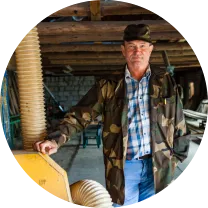
Our products are imported. Now we are loading timber for Moldova. We have contracts with firms in Germany and Lithuania. We brought all the buyers here. They saw everything with their own eyes and left happy. Our Lithuanian partners Praslas dispatch round timber across the world. Those who possess raw materials will never be in the red.
Mikalai Varanetski had moved to Chojniki not long before the Chernobyl nuclear accident occurred. He says he fell for local rivers and lakes and decided to settle here. After the accident, Varanetski participated in the liquidation of its effects. Later, he became one of the Reserve founders and served as its first director. After accusations of organizing illegal helicopter hunting safaris for VIP officials, Varanetski changed his place of residence and work. In fact, the former director was lucky. Because he was a Chernobyl liquidator, prosecutors asked for amnesty and removal of conviction from official records. 14 years later, the new officials in charge of the department to deal with the consequences of the 1986 nuclear fallout invited him to run the experimental commercial unit in the Reserve.
"We are outside the 30-km contaminated zone but I have a proposal: let’s take fine wood trees, for example, oak and stack them in a flowing-water reservoir. In 15 years, it will be a golden reserve. There are exceptional oak forests there. Even if they do not meet radiation safety standards yet, they will pass them in 20-30 years. In fact, we have started doing it slowly already. There are more than 500 hectares of 110-140 year old oaks. Why would they stand rotting for nothing? I created this reserve and I know every path here.
People should not fear but respect radiation.
I do not understand why it is a problem to allow trophy hunting there. I brought 15 bison there in 1996. Now there are nearly 160 of them. Over 20 have died due to age since then. What is a problem to bring a wealthy hunter to shoot a bison for 10 000 euros and take the trophy with him? After chemical treatment, radiation levels [on the trophy] will be 300 times less. This reserve is actually not a reserve because it is not on the list of specially protected areas. It is subject to regulation by the law on the legal regime of territories [contaminated because of the Chernobyl nuclear power plant accident]. Where else can people earn money here?"
The statute of the Palessie State Radiation and Ecology Reserve forbids economic or other activities except environmental protection, maintenance of utility infrastructure, actions associated with the radionuclides transfer prevention, research and experimental works. Check upcoming Euroradio’s stories about how the sale of timber from the Reserve can be regarded as a commercial experimental activity.
As it has turned out wood from the Reserve can end up anywhere in Belarus and even across the border. Euroradio approached the Ministry of Agriculture’s operator, which exports Belarusian forest resources for explanations.
"The European Union does not require any phytosanitary certificates. Russia, China and Ukraine do. Europe has no such requirements. A buyer can demand a certificate of origin, a radiation or phytosanitary certificate but they simply do not request that. In general, we export wood to Europe without giving them a single certificate."
In order to find out definitely if radioactive timber can end up in other European countries, Euroradio contacted Lithuania’s Radiation Protection Center. The center’s director Albinas Mastauskas was not surprised when he heard our questions:
""You have touched on this [very important] issue… Belarus itself needs to sort it out and tell both you and us. We discussed it very thoroughly after we found so much cesium in the ash from one of our boiler stations that it could treated as radioactive waste. We are not talking about strontium. Over the past years when wood became popular as fuel in Lithuania, more than 10-15 percent of this product is imported from Belarus. They bring fuel wood in huge numbers in railway carriages because it is cheap. Our cesium levels norm for fuel wood is 30Bq/kg. The European Union has no norms at all for construction timber."
"Various Belarusian agencies set different criteria: 740 Bq/kg by Healthcare Ministry, 300 Bq/kg and in some cases 200Bq/kg by the Forestry Ministry. We will be happy if your story helps to raise the issue why there is so much confusion. I told Belarus Ambassador that you do not have a concrete agency responsible for this issue. Every forestry issues its own document. We are not happy that a seller who produces timber can issue a certificate confirming wood is not contaminated. In general, our customs service controls the [enclosed] documents. When a special sensor goes off after detecting increased radiation levels during border controls, we take samples and detect cesium.
We turned many trucks back to Belarus because the level of cesium was higher than in the certificate of origin.
I told the minister and the government that there is information about trees logged in the contaminated area. We cannot guarantee that it will not end up in our country. We cannot take risks and need to introduce controls. Moreover, many firms in Lithuania are involved in re-exporting business. Hence, this kind of timber may later be forwarded elsewhere in the world."
